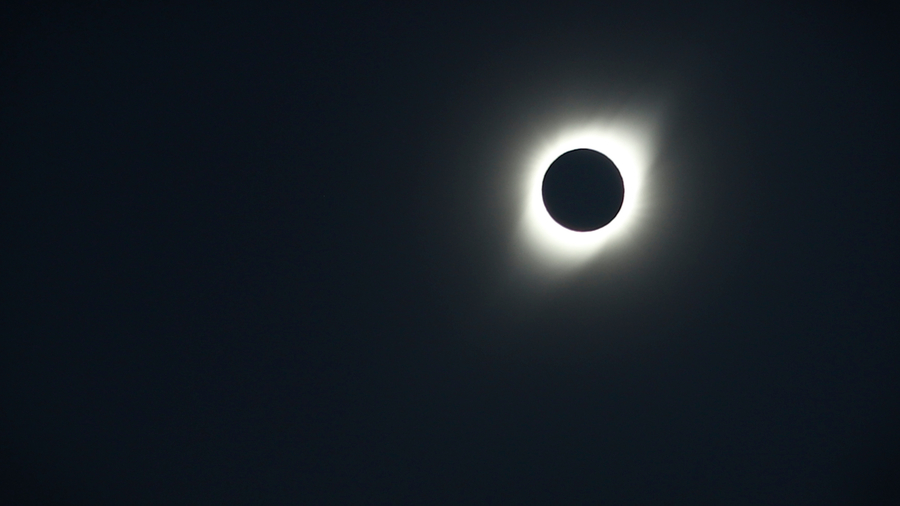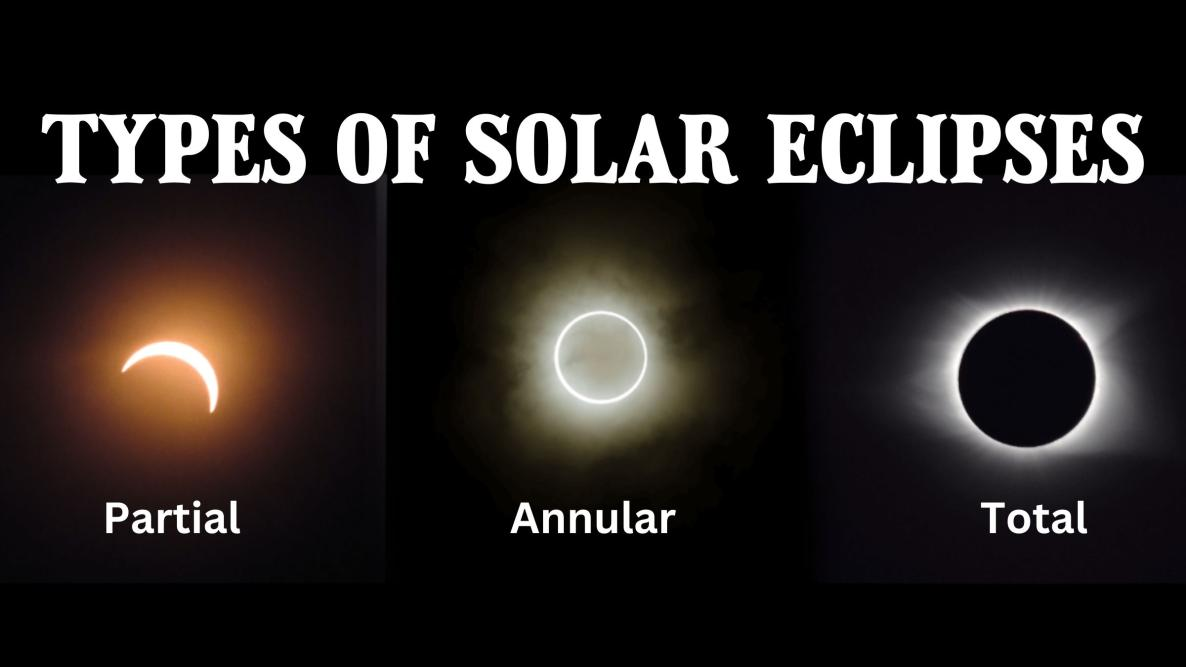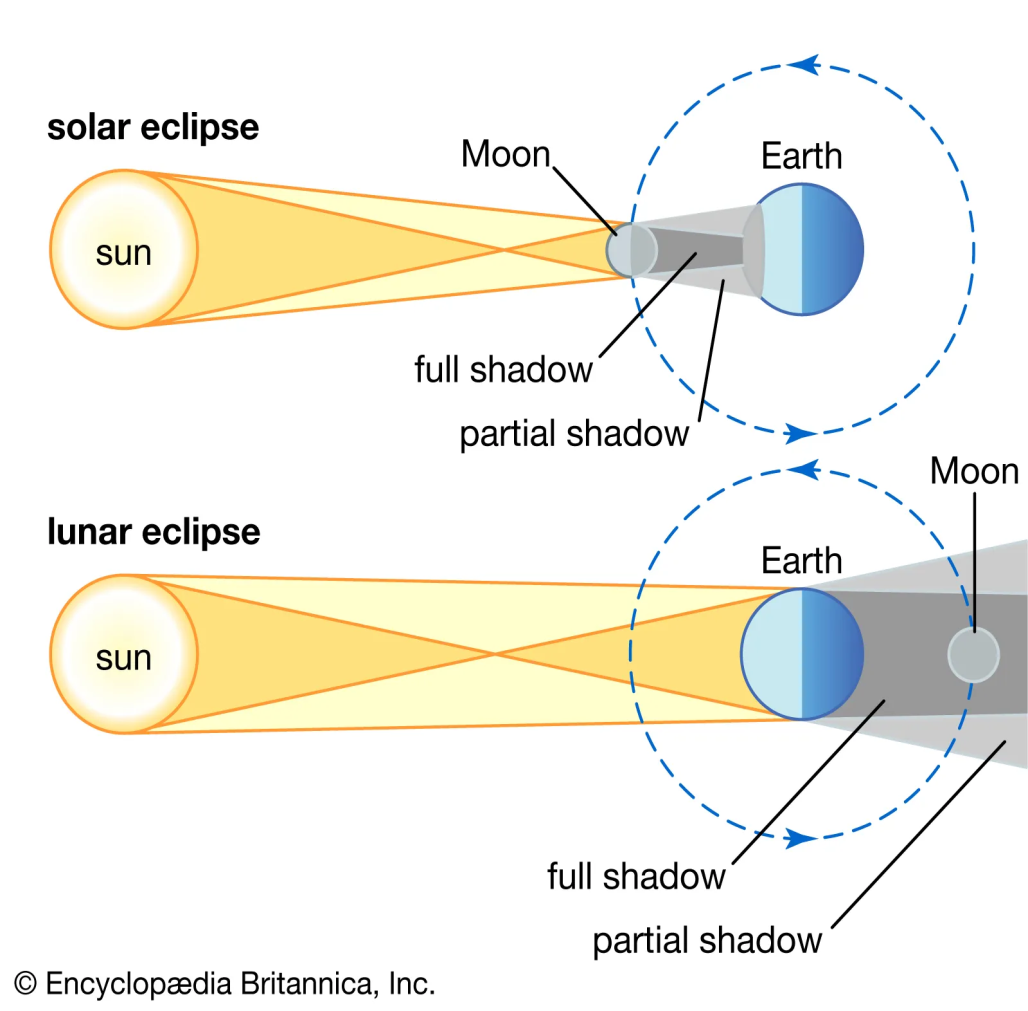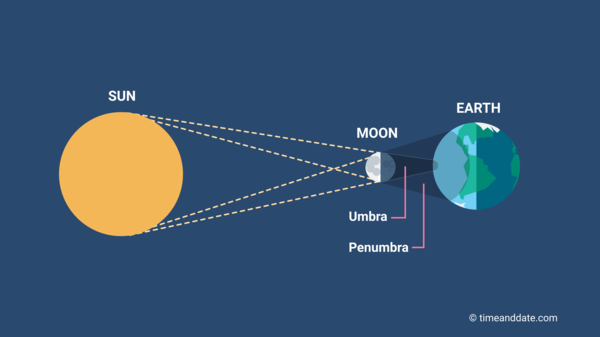Description

Copyright infringement not intended
Picture Courtesy: https://www.timeanddate.com/eclipse/total-solar-eclipse.html
Context: A total solar eclipse occurs when the Moon passes directly between the Earth and the Sun, resulting in the Moon's actual size to match or exceed that of the Sun as seen from Earth.
About Solar Eclipses
- Solar eclipses occur when the Moon passes between Earth and the Sun, blocking part or all of the Sun's light. They occur during the new moon phase when the Moon's orbital plane aligns closely with that of Earth.
- Solar eclipses happen 2 to 5 times a year during eclipse seasons. Total solar eclipses, where the Sun is completely obscured, are relatively rare and occur approximately every 18 months on average somewhere on Earth.
Types of Solar Eclipses
- Total Eclipse: The Moon completely covers the Sun, revealing the solar corona. This happens along a narrow path on Earth known as the path of totality.
- Annular Eclipse: The Moon is directly in line with the Sun but appears smaller, resulting in a ring of sunlight around the Moon's silhouette.
- Hybrid Eclipse: This eclipse type transitions between total and annular along its path.
- Partial Eclipse: The Moon covers only part of the Sun from the viewpoint on Earth.

|
Directly looking at the Sun during a solar eclipse can cause eye damage. Special eye protection or indirect viewing techniques are essential.
|
About Total Solar Eclipse
- The rarity of a total solar eclipse is primarily due to several factors related to the alignment and geometry of the Earth, Moon, and Sun.
Alignment of Earth, Moon, and Sun
- A total solar eclipse occurs when the Moon, in its orbit around the Earth, aligns perfectly between the Earth and the Sun. This alignment is crucial because it results in the Moon's shadow falling on a specific region of the Earth's surface.
- The Moon's orbit around the Earth is tilted at about 5 degrees relative to the Earth's orbit around the Sun (ecliptic plane). This tilt means that most of the time, during the new moon phase when the Moon is between the Earth and the Sun, its shadow misses the Earth either above or below the planet's surface.

Size and Path of the Moon's Shadow (Umbra)
- The umbra shadow, where a total solar eclipse is visible, is relatively small compared to the overall size of the Earth. It covers only a narrow path on the Earth's surface.
- The umbra path is typically around 100 miles wide and can traverse the Earth's surface at varying speeds, contributing to the rarity of experiencing a total solar eclipse from a specific location.

Frequency and Distribution
- While there can be multiple solar eclipses (total, partial, annular) in a year, the occurrence of a total solar eclipse visible from a specific location is less frequent.
- On average, a particular spot on Earth will witness a total solar eclipse only once every 400 years. This is because the umbral path covers less than one percent of the Earth's surface during any given eclipse. Additionally, a significant portion of the Earth's surface is covered by water (70%) or uninhabited land, further reducing the chances of large populations witnessing a total solar eclipse.
Conclusion
- The rarity of total solar eclipses stems from the precise alignment required between the Earth, Moon, and Sun, the specific size and path of the Moon's shadow (umbra), and the geographic limitations that restrict where these spectacular celestial events can be observed.
Source:
Indian Express
Wikipedia
|
PRACTICE QUESTION
Q. Consider the following statements in the context of the solar eclipses:
1. It occurs when the Moon comes between the Sun and the Earth, blocking the sunlight.
2. It can only occur during a new moon phase.
3. It can be visible from all locations on Earth simultaneously.
4. It occurs more frequently than lunar eclipses.
How many of the above statements are correct?
A) Only one
B) Only two
C) Only three
D) All four
Answer: B
|














